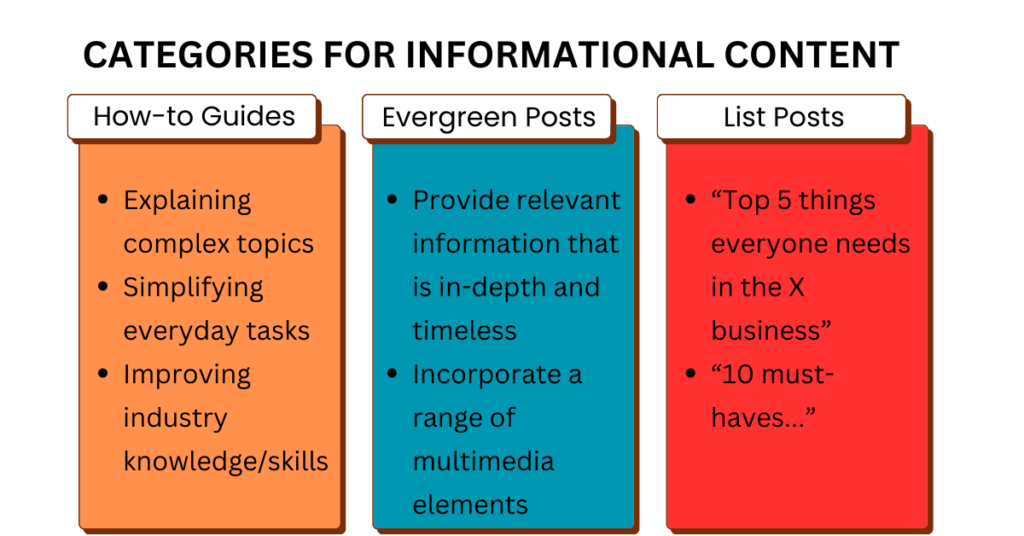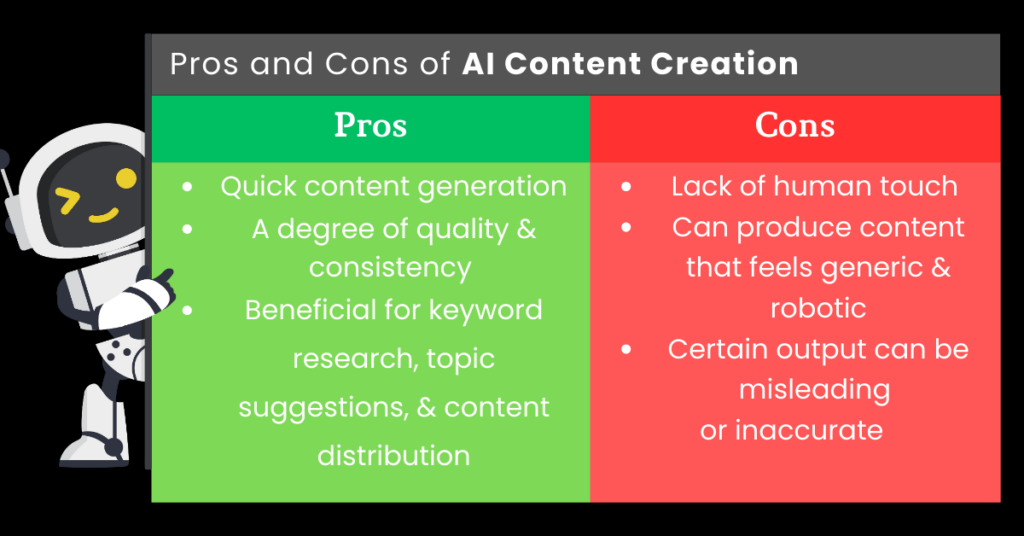This article contains affiliate links – but that doesn’t mean this piece is an ad.
All content is our honest take on the service/product and incorporates our
real thoughts and experience using it.
Content remains king in the ever-evolving digital landscape, especially for Software as a Service (SaaS) companies. While the term is cliche, it’s that way for a reason. The best SaaS companies are known for great code, great marketing, and great customer service.
They aren’t known for having great B2B SaaS content writing skills. You can change that and leap ahead of your competitors. According to Ahrefs, 67% of marketers report that content marketing generates leads.
Well-crafted, engaging content can make a significant difference. It helps influence conversions, boost Search Engine Optimization (SEO), enhance branding, and reduce churn rate. How? By educating customers.
However, creating this gold-standard content is not a walk in the park. It requires a strategic approach, the right tools, and an understanding of your audience.
We’ll delve into the potential of Artificial Intelligence (AI) in content writing for SaaS businesses. What are the pros and cons of content writing services? What knowledge do you need to keep your content fresh, relevant, and engaging? Read on to find out.
Table of Contents
Understanding the Importance of Content Writing for SaaS
Content writing for SaaS businesses has never been more important than it is right now. In today’s crowded marketplace, simply offering a great product isn’t enough to capture customers’ attention.
Most marketing teams are relying on subpar services to try and game search engines by stuffing keywords into terrible content.
They’re putting budget dollars into AI, not real people. As a CEO, you already know that spending money on quality talent has the best ROI in any business venture.
Why should your content impress people first and search engines second?
Don’t Reinvent the Wheel – Just Make a Better One
Businesses must provide relevant and informative content that engages their target audience and showcases their expertise. They’re the ones who buy your products. They’re the ones who spread the word about it to others in their professional network.
How would you like to be the go-to resource for the best information in your industry? Do you have any idea how powerful that can be?
Imagine everyone in your sector looking at your blog or website for answers. Think about what content writing for SaaS customers can do for your sales.
Sure, high-quality content can help boost search engine rankings and drive traffic to a company’s website. This will likely lead to increased sales and revenue. But it’s not the only reason.
Failure to make content a priority can hurt your rankings, lower sales, and put you into a category of “everyone else”. Did you start your company so you could be the definition of mediocrity? We hope not.
The Role of Content in Conversions
Let’s start off with something you may have heard already. Effective content writing can have a significant impact on conversions for SaaS companies.
By providing valuable information and addressing pain points, businesses can create trust with potential customers and nudge them toward making a purchase. Let’s take a look at our old friend, the sales funnel.

The majority of marketing and sales teams are going to push for bottom-of-the-funnel content. They want the sales. The conversions. Cash to the pocket.
Unfortunately, so does everyone else. This is a crowded club, and the bouncers aren’t letting everyone in unless they’re A-list celebrities or they know the owners.
The top-of-the-funnel keywords are the dive bar of the content scene. Sure. It’s not as sexy. But you never know who you’ll meet, and you can still have a good time. The glasses are dirty, and you shouldn’t eat the food, but…ok. This is getting out of hand.
The point is that you should focus on top-of-the-funnel content for two reasons.
Site Structure
Site structure is part of how you build the navigation to your website. It should be clean and simple. Have an about section, pricing, resources, etc…
The second tier is where the magic happens. Your pricing section will include separate packages. Your blog will have different categories. Having an easy-to-follow site structure makes it easier for people to navigate your site. It also makes it easier for Google’s bots to crawl it.
Next, create what is called content silos. Here, you create content that is at the top of the funnel. And you make a lot of it, making sure to hit all those low-hanging fruit keywords. This is where the next phase comes into play.
Internal Linking
Internal links are used to drive traffic from one piece of content to another. There are two main ways to do this.
In the Content
The first is internal linking with relevant anchor text within your content.
For example, in the middle of a blog post, you could have something like “Related: The top 10 Reasons to Write Blog Posts.” or mention reasons to write blog posts with a link to your other article.
You want to make sure the anchor text is exact so people know exactly what they’re going to find when they click.
Use a CTA
The other place to use it is at the end of content as a call to action. Did you enjoy this post? If you have time for another, check out this one on reasons to write blog posts, with a link to your article.
So you have all this top-of-the-funnel content. Use internal links to push your audience to the middle of the funnel content.
Then, use an internal link to push them even further down the funnel. With your bottom-of-the-funnel content, your CTAs should encourage the prospect toward a free trial, contacting a sales team member, or outright purchasing your service.
As you can see, a well-thought-out site structure can do most of the work. It handles everything from discovery all the way through to the sale.
How does this impact your search engine optimization?
B2B SaaS Content Writing and SEO
Relevant and well-optimized B2B SaaS content writing can improve a company’s search engine rankings. Using the above principles is not just intelligent design and sales-forward for your company. Search engines actually want you to do it this way.
Let’s bring it all together and put a nice little bow on it:
- Make your website easy to navigate
- Focus on top-of-the-funnel content and easy-to-rank keywords
- Internally link to middle-of-the-funnel content from there
- Finally, internally link to bottom-of-the-funnel/transactional content
SaaS Content Writing Tips

Now, let’s circle back around. We just told you how to get it done. But what kind of content should you be writing? What type of posts work well for these keywords? First, a few SaaS content writing tips:
- Keep your audience in mind.
- Deliver what they want without any fluff.
- You want to be a resource. The content and your voice should match. Be educational and conversational.
The bulk of your informational content should fall into these three categories:
How-to Guides
How-to guides have proven to be a popular and effective content format to attract potential customers.
From explaining complex technical topics to simplifying everyday tasks, these guides provide valuable insights that help your audience improve their knowledge and skills in your industry.
You want to break these topics down, but at the same time, you don’t want to come across as condescending. Be helpful above all else.
A well-crafted how-to guide can capture the interest of your target audience and help establish your authority in your niche.
Deliver something that communicates your message clearly and concisely to differentiate your brand and elevate your business.
Evergreen Posts
Long-form evergreen posts are a type of content that is both in-depth and timeless. They provide valuable information that will remain relevant and useful to readers long after publication.
These posts are usually longer than your average blog post. They’ll often incorporate a range of multimedia elements to keep readers engaged.
The key to creating a successful long-form evergreen post is to identify a topic that interests your target audience and then provide a comprehensive, authoritative piece on the subject.
You may be licking your lips right now thinking about this one. And you should be. Long-form evergreen content is a beautiful thing. But in the SaaS world, it’s a challenge.
Why? Because of the pace at which this industry is evolving. Most of the stuff that’s out there is already outdated. You may have to think outside the box when content writing for SaaS products.
Top X Lists, AKA List Posts
“The top 5 things everyone needs in the x business.”
“10 must-haves for everyone’s work-from-home office.”
These are examples of list posts. And they shouldn’t confuse them with verses or comparison posts.
“This product VS. that product.” – That is more middle-of-the-funnel content.
List posts are an effective tool that should be in every company’s content toolkit. It’s any article that compiles a list of items or ideas related to a particular topic.
These posts are easy to read, digest, share, and provide value to the reader. Lists can increase website traffic and engagement and are a great way to get started with content writing for SaaS products.
Who Should Write Your Posts?
Woo. This one is a doozy, folks. It’s 2024, and every freelancer and marketing agency in the world now has their fiercest competition yet – AI.
We’ve answered the why, the how, and the what kind. The who. That’s up to you. Every option has its pros and cons. Here are the three most relevant choices for SaaS content writing.
Hire a Writer
There may already be a marketing team member with copywriting or content writing experience. If this is the case, then it looks like they have a new addition to their job description.
But what if you’re a solo founder? A one-person army. Just you against the world.
Things can get pretty complicated in this situation. You can always do it yourself. But why would you? Content writing isn’t why you went into the SaaS business. It’s not what you’re best at.
It may be in your best interest to hire a freelancer. Writing-specific job boards, such as ProBlogger, will let you post a job for a writer. Fiverr and Upwork are options as well.
Keep in mind you get what you pay for here. If you want quality – someone with a SaaS background and serious writing chops – it’s going to cost you.
The Rise of AI in Content Creation: Pros and Cons

If you want to do it on your own but don’t have the time to spend half your day typing away like Hunter S. Thompson on a 12-hour binder, you could go the AI route.
With AI-powered writing tools, businesses can generate content quickly and efficiently while maintaining quality (kind of) and consistency (kind of).
These tools can also assist in keyword research, topic suggestions, and content distribution. However, there are also potential downsides to relying too heavily on AI for content creation.
AI-generated content may lack a human touch and creativity, leading to generic and robotic-sounding writing.
Try to balance utilizing AI technology and maintaining the authenticity and uniqueness of your brand’s voice.
SEO Services to Use When Content Writing for SaaS Companies
Outsourcing SEO content writing services for SaaS companies may seem attractive for businesses lacking the in-house resources or expertise to create high-quality content.
These services often offer a team of professional writers and editors who can create content tailored specifically to a company’s needs and target audience. They’ll do the brainstorming, the outlining, the keyword research, and write and edit everything. They deliver a final product right to your inbox.
No muss, no fuss.
However, the cost of these services can add up over time, making it less feasible for smaller businesses.
If you’re going to take this route, it’s important to do your research. Find an agency that specializes in what you do. Look for a business that knows how to absorb a brand voice, see your vision, and help your business succeed.
Finding an agency like this is no easy task, especially one that will do it all for a reasonable price.
Content Writing for SaaS – Powering the Future of Your Website
Content writing for SaaS solutions is an intricate process that requires careful thought, planning, and strategic execution.
Whether you hire a full-time employee for your SaaS content writing needs, use AI, or outsource SEO content writing services for SaaS companies, it’s crucial to focus on delivering value to your audience.
Following the SaaS content writing tips mentioned today can boost your conversions, improve your SEO, build your brand, and reduce your churn rate. Choose your B2B SaaS content writing path wisely and aim for content that educates, engages, and establishes your authority in the SaaS industry.





Your article helped me a lot, is there any more related content? Thanks!
Glad to hear you found this article helpful. You can also have a look at our B2B SaaS marketing blog and SaaS content audit articles.